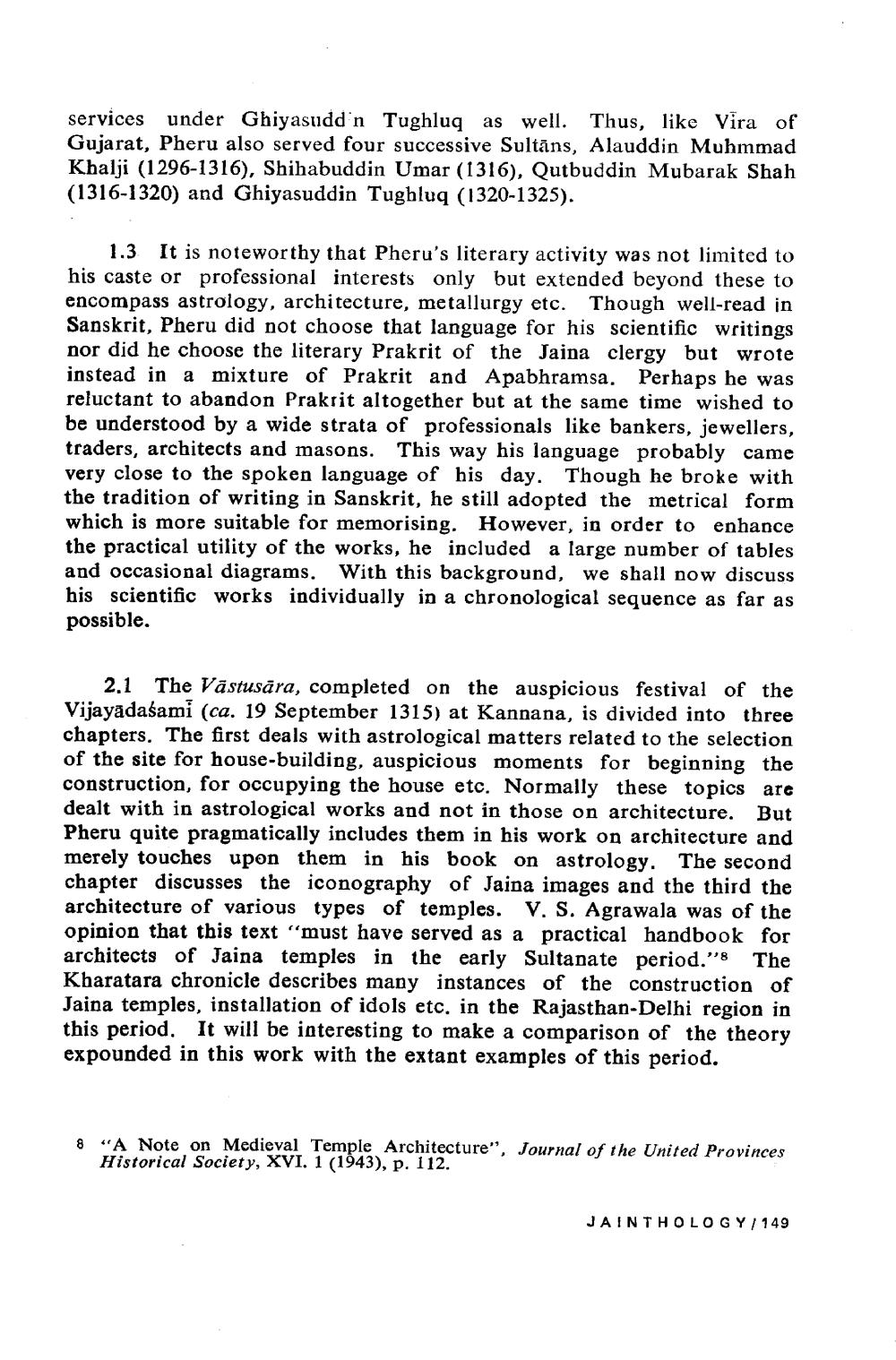________________
services under Ghiyasuddin Tughluq as well. Thus, like Vira of Gujarat, Pheru also served four successive Sultāns, Alauddin Muhmmad Khalji (1296-1316), Shihabuddin Umar (1316), Qutbuddin Mubarak Shah (1316-1320) and Ghiyasuddin Tughluq (1320-1325).
1.3 It is noteworthy that Pheru's literary activity was not limited to his caste or professional interests only but extended beyond these to encompass astrology, architecture, metallurgy etc. Though well-read in Sanskrit, Pheru did not choose that language for his scientific writings nor did he choose the literary Prakrit of the Jaina clergy but wrote instead in a mixture of Prakrit and Apabhramsa. Perhaps he was reluctant to abandon Prakrit altogether but at the same time wished to be understood by a wide strata of professionals like bankers, jewellers, traders, architects and masons. This way his language probably came very close to the spoken language of his day. Though he broke with the tradition of writing in Sanskrit, he still adopted the metrical form which is more suitable for memorising. However, in order to enhance the practical utility of the works, he included a large number of tables and occasional diagrams. With this background, we shall now discuss his scientific works individually in a chronological sequence as far as possible.
2.1 The Vástusära, completed on the auspicious festival of the Vijayadasami (ca. 19 September 1315) at Kannana, is divided into three chapters. The first deals with astrological matters related to the selection of the site for house-building, auspicious moments for beginning the construction, for occupying the house etc. Normally these topics are dealt with in astrological works and not in those on architecture. But Pheru quite pragmatically includes them in his work on architecture and merely touches upon them in his book on astrology. The second chapter discusses the iconography of Jaina images and the third the architecture of various types of temples. V. S. Agrawala was of the opinion that this text "must have served as a practical handbook for architects of Jaina temples in the early Sultanate period." The Kharatara chronicle describes many instances of the construction of Jaina temples, installation of idols etc, in the Rajasthan-Delhi region in this period. It will be interesting to make a comparison of the theory expounded in this work with the extant examples of this period.
8 "A Note on Medieval Temple Architecture", Journal of the United Provinces
Historical Society, XVI. 1 (1943), p. 112.
JAINTHOLOGY/ 149




